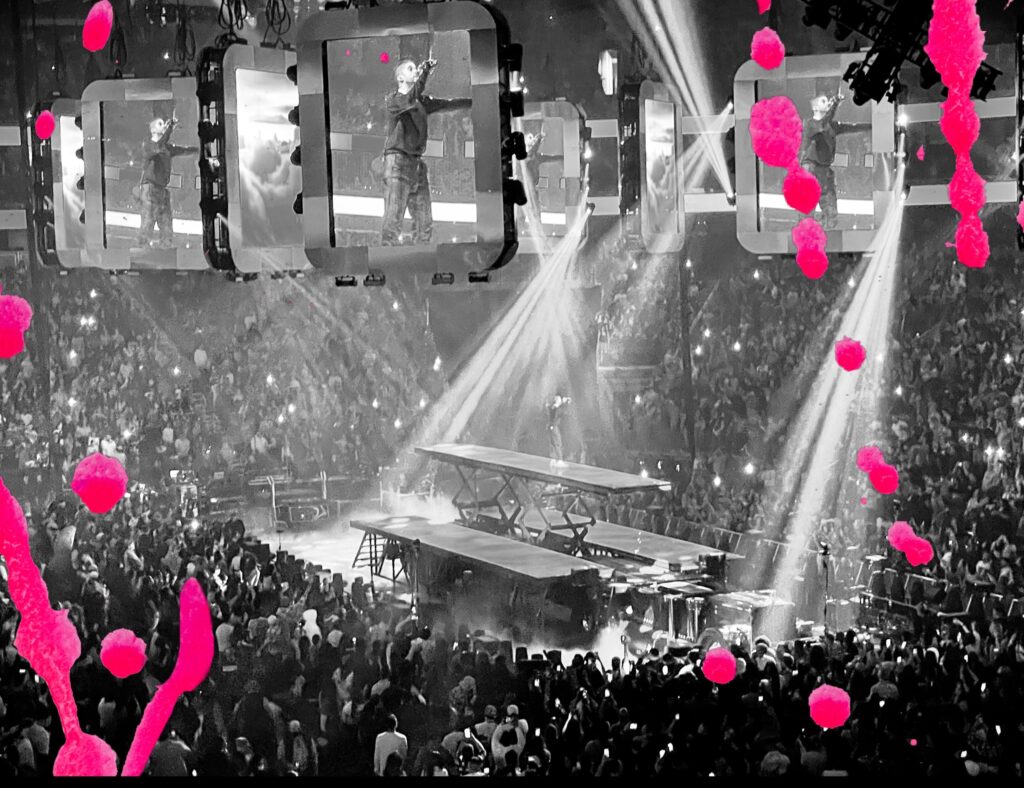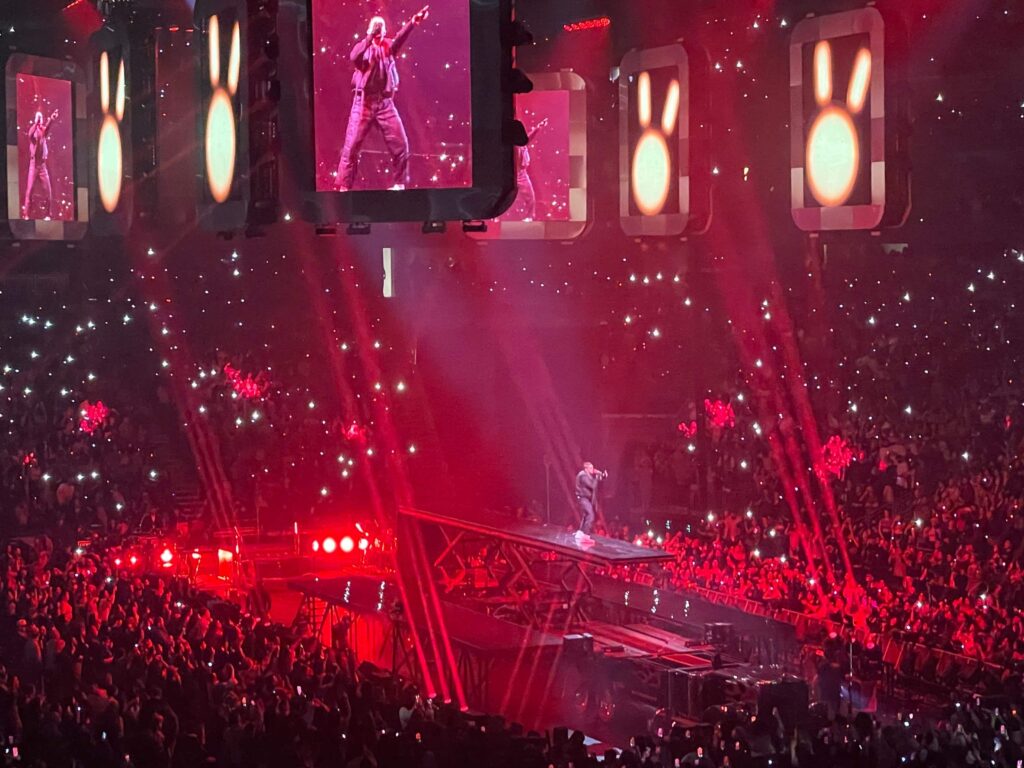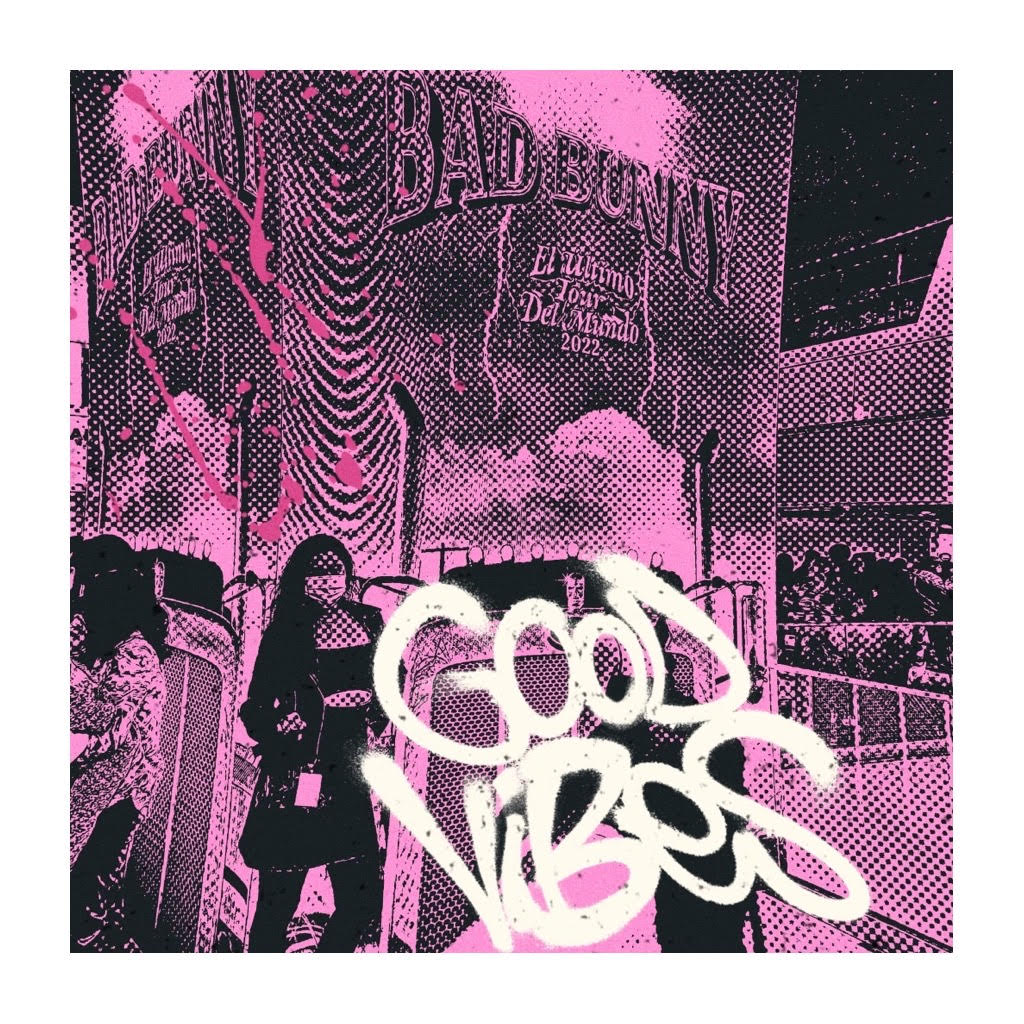Nearly a year before his performance on March first, months before the arena would open to the public, Bad Bunny sold out the Climate Pledge Arena in just a few hours of the presale for El Ultimo Tour Del Mundo.
Selling out an arena is generally a foregone conclusion for an artist who remains atop the charts. However, for an artist that sings primarily in Spanish and has very few “crossover” hits, selling out the Seattle Metro area that is only 11% Latino is quite the feat.
Bad Bunny fans arrived early at Climate Pledge Arena. Despite doors opening at 7 pm, there were already a few hundred people lined up by 4 pm. By 6 pm, the lines had grown to thousands of eager fans ready to make their way into the arena to see the Puerto Rican-born Benito Antonio Martínez Ocasio.
This was the largest crowd outside of the arena since the Seattle Kraken played their inaugural home game back on October 23. Far larger than the crowds from the unofficial first concert with Death Cab for Cutie and Foo Fighters, and the official first concert, Coldplay.

As fans streamed in, some were dressed like they were going to a nightclub, others already had a stack of the $80 shirts being sold outside. This wasn’t an ordinary concert, for many this was the event of the year.
Eduardo Lopez, a Latino who lives in downtown Seattle, said it was a bit of a shock to see so many Latiné faces and hear so many of them speaking Spanish. “I’m privileged that I live downtown and I’m cognizant of it. A lot of Latinos can’t pay to live in a studio or apartment downtown.”
Seattle’s average rent is $2100 and a Latina makes $.55 for every $1 a white male makes in Seattle. This massive wage gap has contributed to many Latinos living south of Seattle.
People came from the Tri-Cities, California, and even from as far as Florida and Mexico. Leo Araujo, who came with a friend from California who had an extra ticket told me even without his friend’s ticket “I would have come to Seattle because it’s cheaper than anywhere in California ‘cause the representation isn’t as large as in California.” Despite some Bad Bunny tickets reselling here for hundreds of dollars above the original price, tickets in places like El Paso, Houston, and Los Angeles were selling for up to $4000 per ticket.

Edwin Ramirez and his friends who came here from Central Washington University, in Ellensburg reflected on coming to see Bad Bunny in a predominately white city. “It shows how representation has grown,” Ramirez said. “His style of music isn’t exclusive to any one race, reggaeton is dance music, anyone can dance to it.”
Despite the hour delay, the fans in attendance maintained high spirits — singing and dancing along to the arena DJ. Fans walked around taking pictures in front of photo installations placed throughout the arena. Flags waved from various Latin American countries.
When the majority of the arena rang out singing, “tragos de amargo licor, que no me hacen olvidar,” at the top of their lungs when “Tragos Amargos” by norteño singer Ramon Ayala was played, it was clear that the audience was largely Mexican. In recent years the song has become a rallying cry or better put, a hymnal for unity amongst a Latino congregation.
Finding community can be difficult for Latiné people in a predominantly white city. Being surrounded by 18,000 fans singing along in Spanish was cathartic.
When Bad Bunny finally emerged from his semi-truck that converted to a stage the arena was deafening. He opened up with the song “Booker T” with the chorus that repeats “Estoy en mi peak,” a statement that is hard to argue next to the fans going nuts. The crowd never relented as he played through songs from the album the tour was named after.
The audience danced through it all as the bass and the light-up wristband everyone in attendance received pulsated and propelled them like the drummer on a dragon boat. The dancers on the stage, of all genders and sizes, made the audience feel seen.
After a fan jumped on stage, he gave her a soft kiss on the cheek before security dragged her off.
The audience got a second wind of screaming after an extremely brief intermission. Bad Bunny returned singing “Yo Perreo Sola” and closed out the show playing songs from YHLQMDLG, his hit 2020 record.
After the show ended the dance spilled out into the streets and the Seattle Center as fans continued to buzz about the concert. Nearby restaurants and bars filled and reggaeton music was heard throughout as owners who usually play classic rock decided to cater to their audience. The evening was like a caldo de pollo for the Latiné soul of Seattle.











